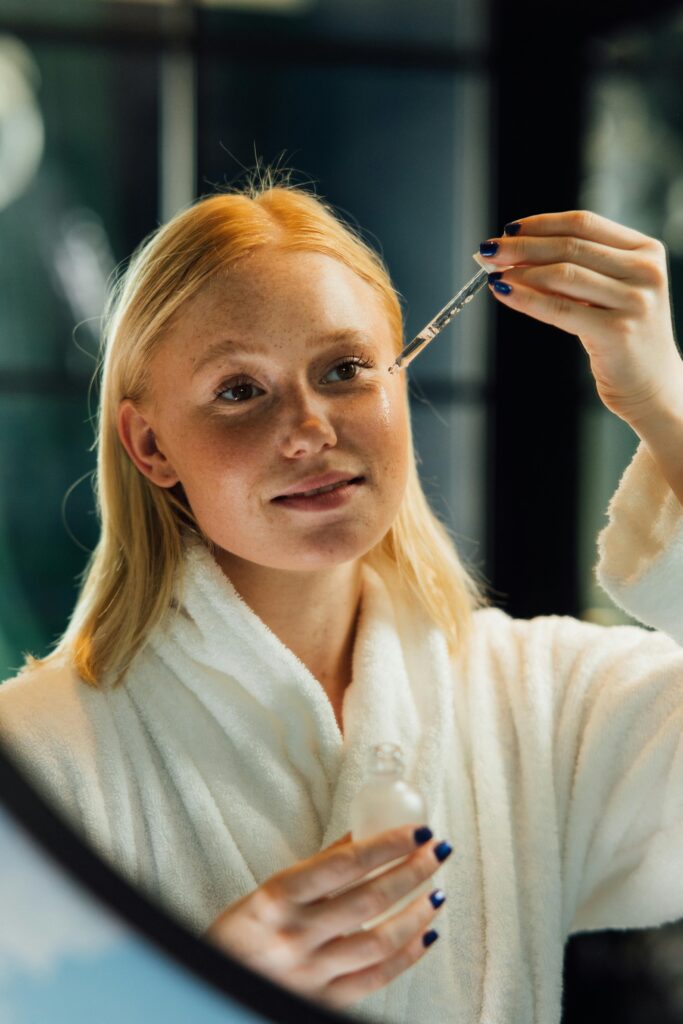
Melasma has quickly become a common skin concern for many individuals. It’s characterized by dark, discolored patches on the skin, driven by a number of triggers including hormonal imbalances. As an aesthetic nurse, it’s one of my biggest struggles to tackle but when done right can have an incredible impact not only aesthetically but immensely on someone’s confidence. As we step into 2025, innovative and effective treatments have emerged, promising real solutions to tackle this persistent pigmentation problem. Below, we explore the top melasma treatments I’ve personally seen work on my patients and that are backed by the latest dermatological research.
1. Breakthrough Oral Tranexamic Acid
Tranexamic acid is showing a lot of promise as a potential solution for reducing melasma. When taken orally starting at low doses, typically around 250 mg twice a day, it has effectively diminished melanin production by inhibiting plasmin activity and reducing vascular factors associated with hyperpigmentation. Unlike traditional treatments like hydroquinone or lasers, tranexamic acid works by targeting some of the underlying causes of melasma, making it a great option for those stubborn cases that just won’t go away. Studies also back up its effectiveness and safety, with minimal side effects reported when used short-term. More and more dermatologists are starting to recommend it as part of a melasma treatment plan, especially for people who haven’t had much luck with topical treatments or in-office procedures.
2. The Power of Clear and Brilliant
Laser therapies have emerged as a viable solution for melasma, effectively targeting and breaking down excess melanin in the skin. Among these, the Clear + Brilliant Laser has gained significant recognition for its non-invasive approach, offering noticeable results with minimal downtime. This 1927-nm diode laser is particularly effective in treating pigmentation by delivering controlled energy that penetrates the skin to remove damaged cells and stimulate collagen production.
This type of laser therapy is complemented by the fact that it’s safe for all skin types, including those with darker skin tones, who are more susceptible to melasma due to higher melanin content. By coupling laser treatments with proper skin care post-procedure, such as using broad-spectrum tinted sunscreens, patients can enhance and maintain their results. It’s crucial to have these treatments performed by experienced professionals to minimize risks and maximize benefits.
3. Chemical Peels for Pigmentation Correction
Chemical peels offer an effective way to refresh the skin’s surface and diminish melasma’s impact. In recent developments, more precise formulations allow for tailored treatment to suit individual skin types and melasma severity, reducing the risk of irritation and maximizing efficacy. Ingredients such as glycolic acid and salicylic acid are commonly used for their ability to exfoliate the skin and improve pigmentation.
Patients seeking a more uniform skin tone can benefit from these peels, which work by removing the top layer of skin where hyperpigmentation resides. This process encourages the growth of new, clearer skin. When combined with ongoing sun protection and skincare, patients often observe significant improvements. VI Peel Precision Plus and Cosmelan peel are strong contenders for tackling melasma.
4. Suppressing Melanocytes with Innovative Skincare
Topical treatments have always been at the forefront of melasma care due to their ease of application and accessibility. Where hydroquinone once reined supreme in lightening stubborn pigmentation, concerns of its safety has banned over-the-counter use in the U.S. Since then, formulations have become more sophisticated, with ingredients like tranexamic acid, kojic acid, and vitamin C proving effective in diminishing dark patches.
- Tranexamic acid, for example, has been widely adopted due to its dual action of targeting melanin production and reducing inflammation, which are critical in treating melasma effectively. Furthermore, the incorporation of sunscreen in these products helps protect the skin from further damage.
- The use of antioxidant-rich preparations has also gained popularity. These formulations aim to not only reduce the visible signs of melasma but also promote overall skin health by neutralizing free radicals and supporting skin cell renewal. My favorite antioxidant would be the CE Ferulic acid from Skin Ceuticals. With these advancements, achieving clearer skin with topical treatments has become more attainable than ever.
Combining antioxidants with moisturizing agents helps in maintaining skin barrier integrity, offering protection against environmental aggressors that can exacerbate melasma. As a result, these comprehensive regimens not only treat existing pigmentation but also prevent future occurrences, proving beneficial for long-term skin health and radiance. With consistent use, individuals can enjoy a clearer complexion and improved skin resilience.
5. The Magic of Mineral Sunscreen
When it comes to protecting your skin from melasma, mineral sunscreen is unmatched. Unlike chemical sunscreens, which absorb UV rays and convert them into heat, mineral sunscreens create a physical barrier on the skin, reflecting harmful rays away like a shield. This is particularly beneficial for melasma-prone skin because UV radiation—and even visible light—can worsen pigmentation. Mineral sunscreens, often formulated with zinc oxide or titanium dioxide, also tend to be gentler on sensitive or inflamed skin, reducing the risk of irritation that chemical sunscreens might trigger.
What sets mineral sunscreen apart is its ability to protect against both UVA and UVB rays instantly after application. Many formulations now also include iron oxides, which are essential for guarding against visible light, another factor that can aggravate melasma. For those battling stubborn pigmentation, mineral sunscreens are an absolute must, offering broad-spectrum protection and an added layer of defense against further discoloration. Plus, they’re often reef-safe and a better choice for the environment!
References
https://www.sonderbeaut.com/the-3d-miracle-trying-out-the-famous-cold-fractional-laser/
https://www.health.harvard.edu/blog/melasma-what-are-the-best-treatments-202207112776
https://www.aad.org/public/diseases/a-z/melasma-treatment
https://my.clevelandclinic.org/health/diseases/21454-melasma
https://healthysolutionsdr.com/melasma
https://pmc.ncbi.nlm.nih.gov/articles/PMC10238972
https://vipeel.com/products/vi-peel-precision-plus
https://www.mesoestetic.com/blog/cosmelan-peel-much-more-than-a-peel
https://health.clevelandclinic.org/mineral-vs-chemical-sunscreen





You must be logged in to post a comment.